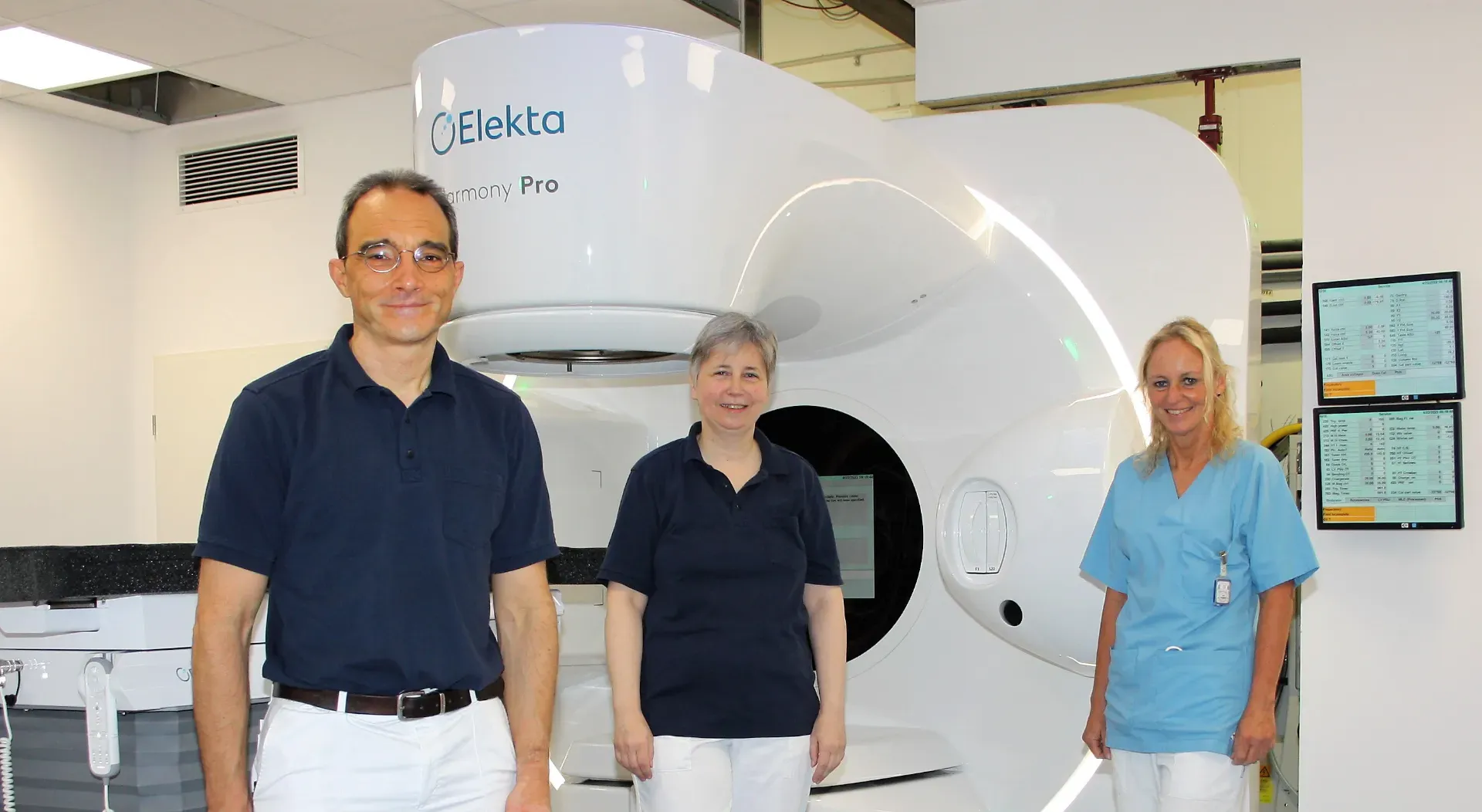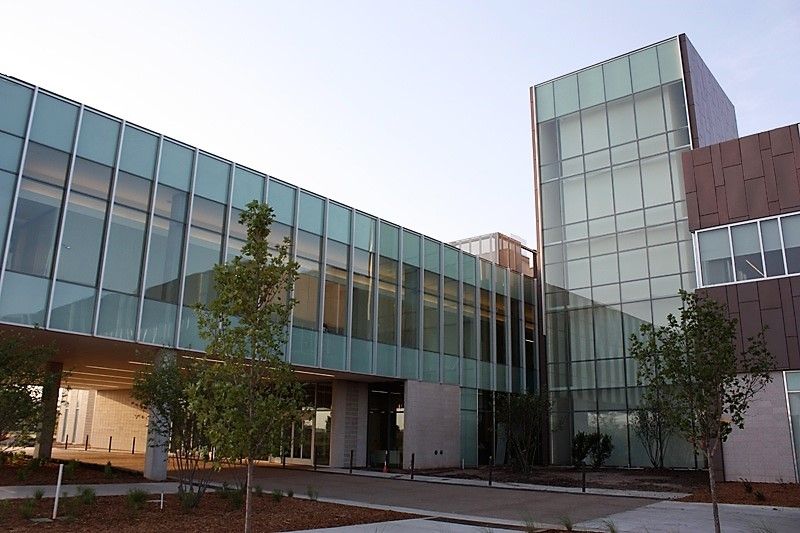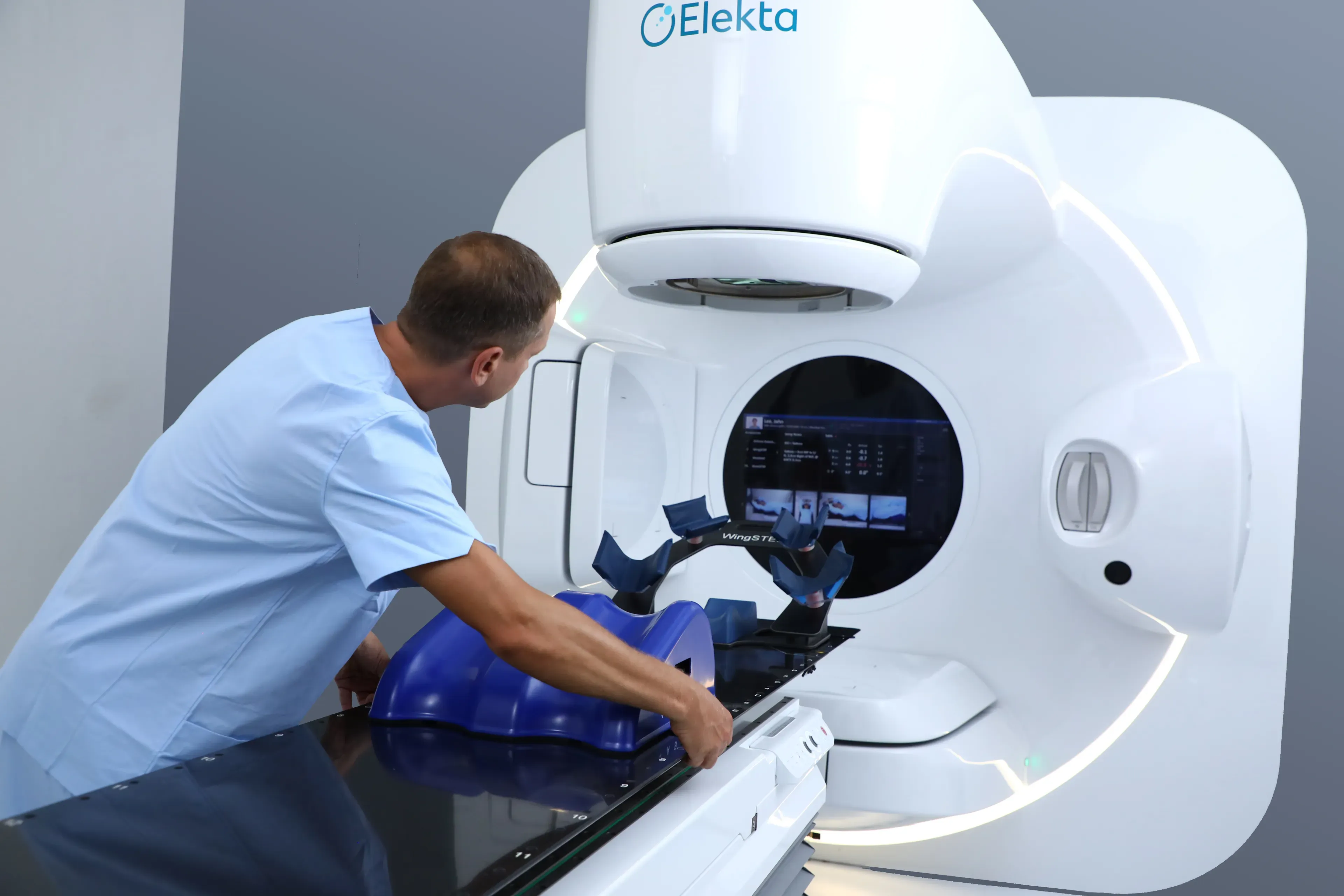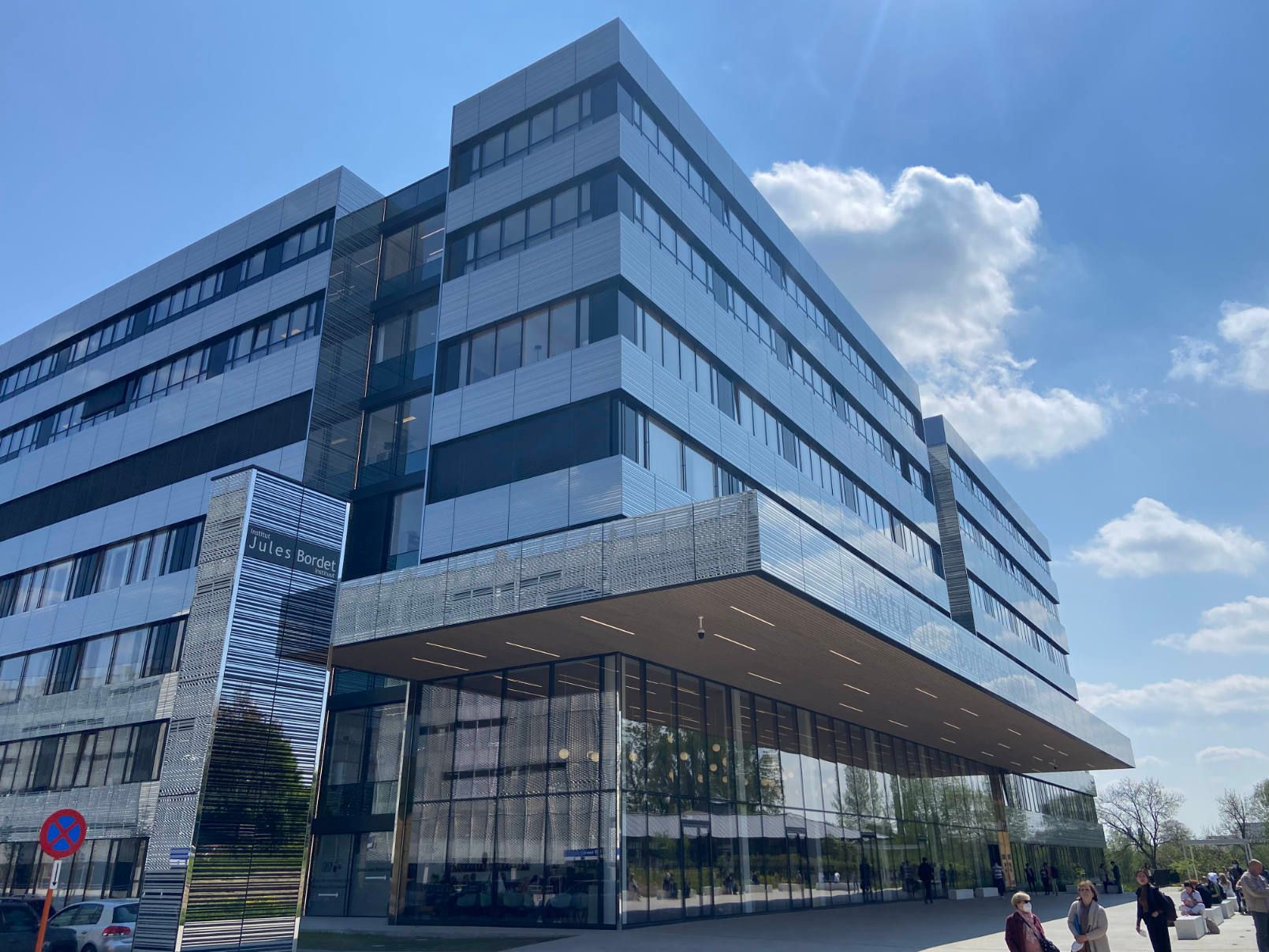Netherlands team debuts online adaptive radiotherapy workflow with Elekta CBCT linac
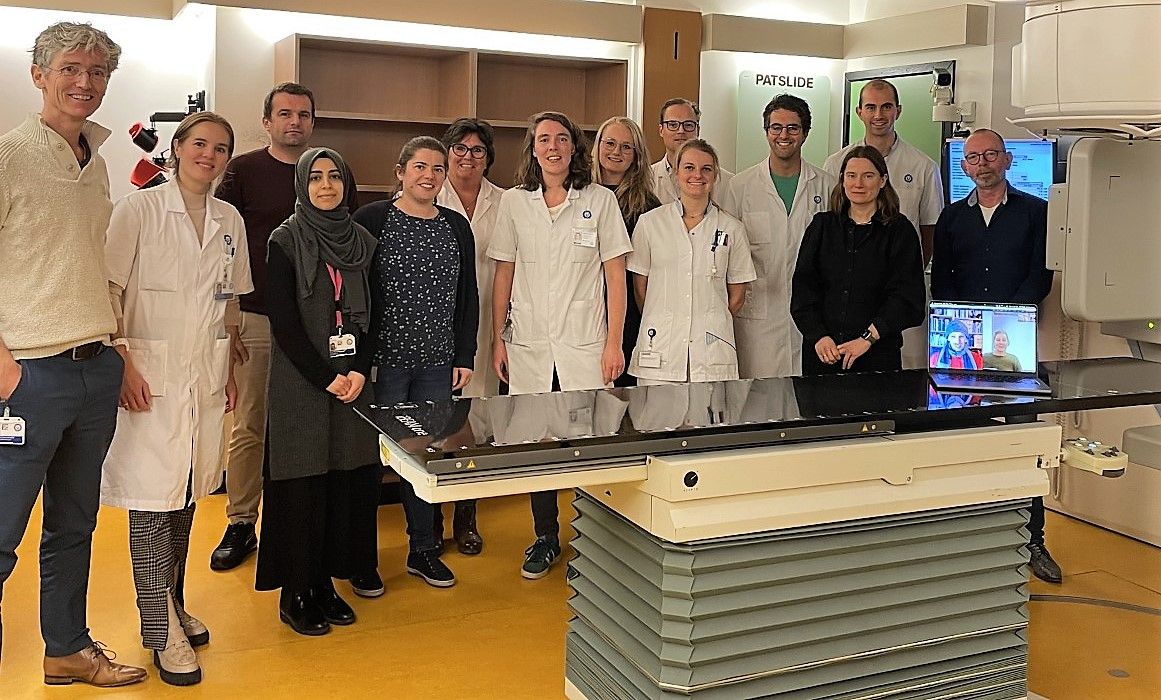
University Medical Center Utrecht is first to adapt patient treatment online using only commercially available Elekta technology
A University Medical Center Utrecht (UMC Utrecht) radiotherapy department team recently treated a patient with advanced bladder cancer using an online adaptive radiation therapy (ART) workflow that employed only released Elekta products, including the oncology information system, treatment planning system and cone beam CT (CBCT) linear accelerator. This achievement is a proof-of-concept that online CBCT-based ART is feasible with standard Elekta equipment.
“The potential to make online ART widely available for Elekta customers who use CBCT linacs is attractive given the clinical advantages of ART as a technique.”
“Since the Elekta Unity MR-Linac was introduced, the opportunities of online ART workflows became apparent. Conventional CBCT-based workflows cannot easily adapt to anatomical changes or rely on a more time-consuming offline workflow to adapt the treatment,” says Maureen Groot Koerkamp, PhD, technical physician and postdoctoral researcher at the UMC Utrecht, a pioneering center in the development and clinical use of MR-guided radiotherapy. “The potential to make online adaptive radiotherapy widely available for Elekta customers who use CBCT linacs is attractive given the clinical advantages of ART as a technique.”
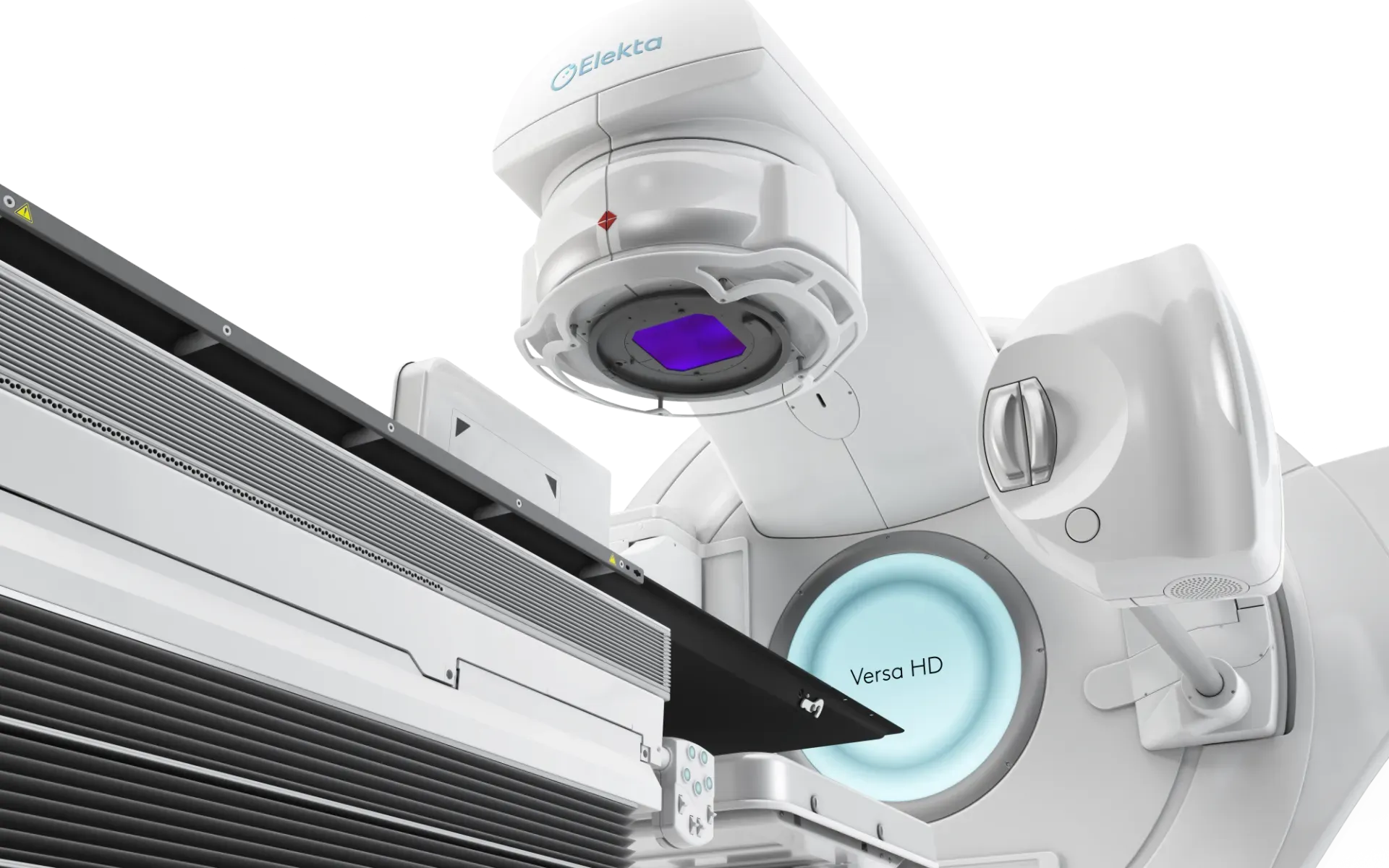
The first use of the CBCT-based online ART workflow involved one of UMC Utrecht’s Versa HD™ linacs, equipped with X-ray Volume Imaging (XVI, v. 5.0.4), Monaco® treatment planning system (v. 6.00.01) and MOSAIQ® Oncology Information System (v. 2.83). UMC Utrecht computer scientist Gijs Bol, PhD, refined in-house solutions to maximize connectivity between XVI, Monaco and MOSAIQ, QA checks throughout the workflow to satisfy risk mitigation requirements, as well as the Monaco scripting used in the workflow.
The online ART workflow was used to adapt the palliative radiotherapy treatment plan for a patient with bladder cancer for each of 10 fractions. Average fraction duration was 25.3 minutes from start of CBCT acquisition to end of beam on, with 11.5 minutes required for contouring, 4.3 minutes required for treatment plan generation, and 2.3 min beam on time with Volumetric Modulated Arc Therapy (VMAT) plan delivery.
Online CBCT ART workflow versus conventional CBCT workflow
Both online ART and conventional workflows begin with a CBCT acquisition, but with online ART no matching of the CBCT to the planning CT as a reference and table correction are performed.
“We just take the CBCT as it is and directly import that into Monaco,” Dr. Groot Koerkamp explains. “Then we propagate contours from the planning CT to the CBCT. Subsequently, the contours need to be checked and adapted such that we have a full, new set of contours based on the daily anatomy. Next, we use that set of contours to generate a fully new treatment plan – one that exactly matches the anatomy of the day. With a table correction only – as in a standard CBCT treatment – we cannot adjust for any internal deformations, like changes in organ shape or position. The online ART workflow [Figure 1] makes it possible to adjust to these internal changes [Figure 2].”
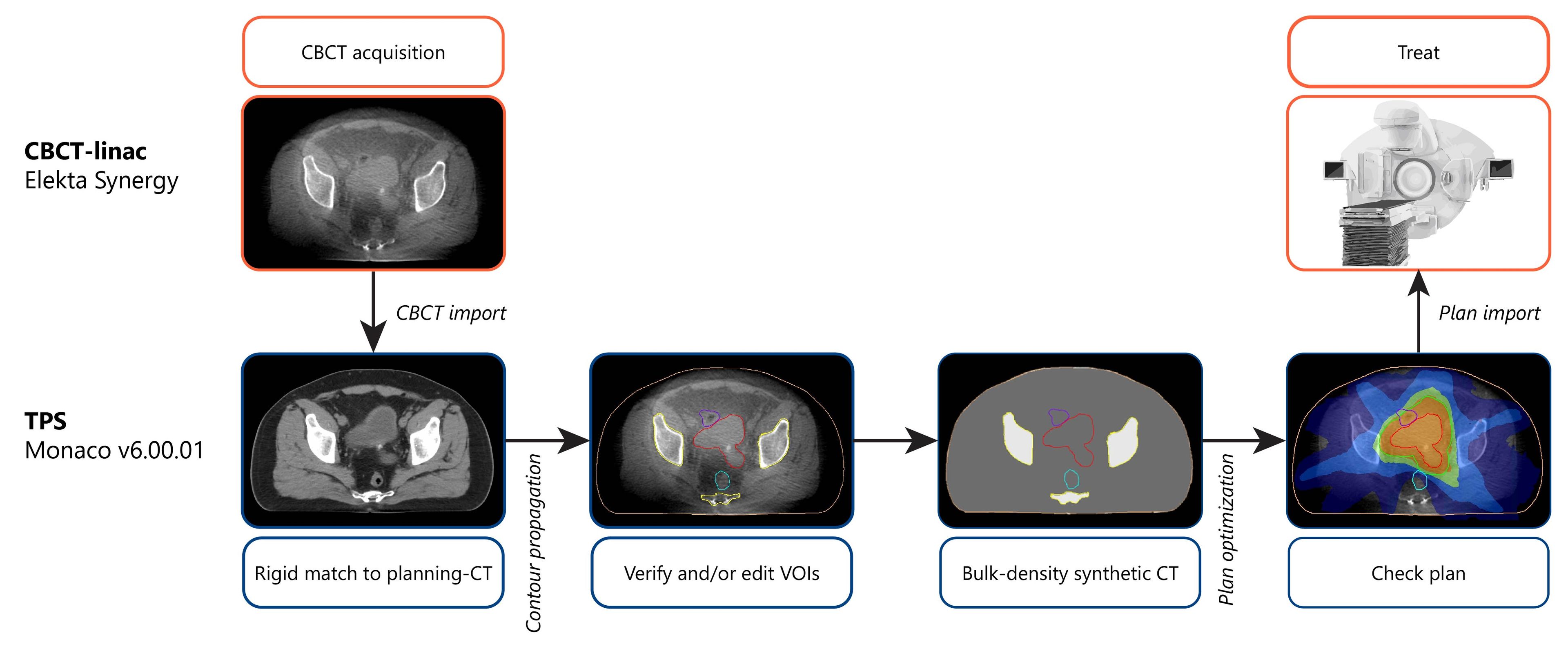
“Once we have the new plan,” she continues, “we export it from Monaco and import it into MOSAIQ, and then we can treat with the new plan we just optimized.”
At the UMC Utrecht, the CBCT online ART workflow is designed to be led by radiation therapists. However, for the first patient, radiation oncologist Wietse Eppinga, MD, oversaw the newly trained RTTs, whose tasks included CBCT acquisition, patient supervision, contouring, and interaction with MOSAIQ. Dr. Eppinga reviewed and approved the contouring and planning.
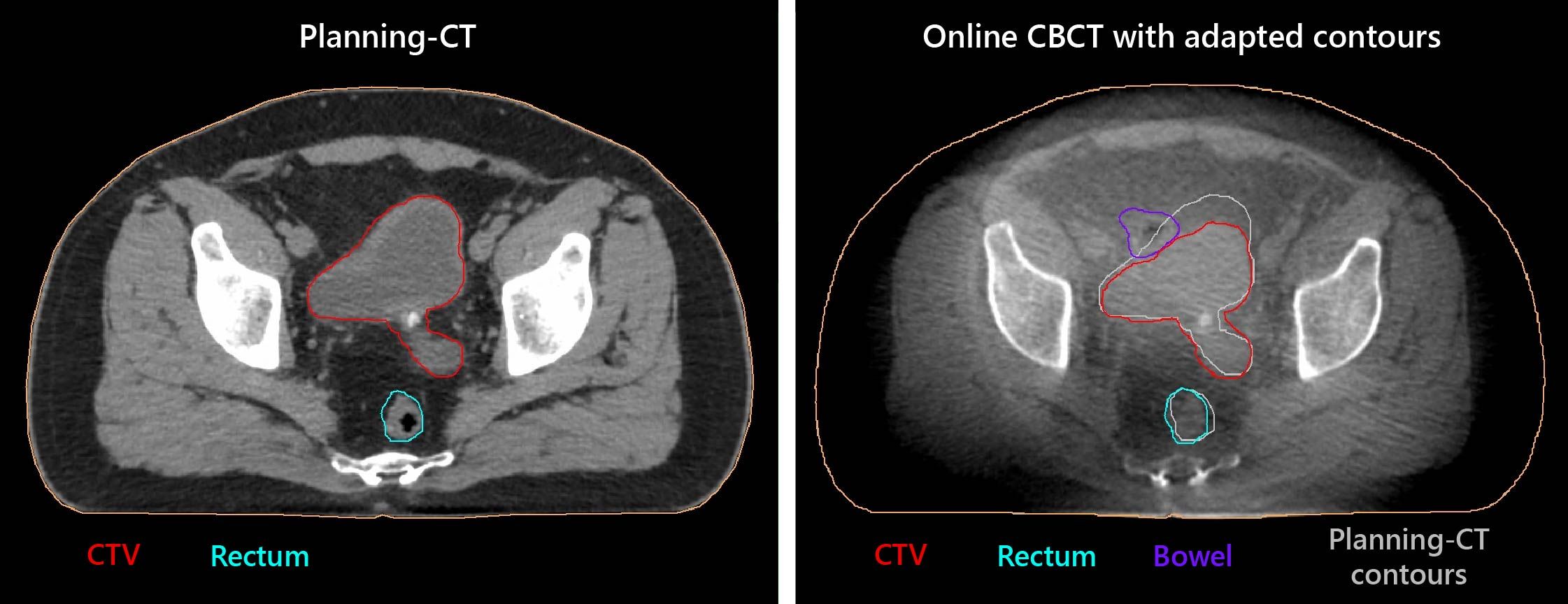
Monaco scripting takes most manual interaction out of planning
UMC Utrecht’s version of Monaco was important in injecting some planning automation into the online ART workflow by virtue of its application programming interface (API)-based scripting feature. Scripting allowed UMC Utrecht to run a series of tasks in one step and to automate repeated or error-prone tasks and minimize manual, user-dependent interaction. Planning tasks facilitated via scripting include couch import, plan template selection, and creating a new plan with automated constraints optimization and plan calculation.
“Monaco scripting facilitates the online ART workflow in two ways,” Dr. Bol says. “First, RTTs are typically not able to create a plan from scratch, so we want to automate that part to obtain a correct, error-free plan. Second, scripting guides the whole procedure, ensuring that everyone who is working with it does only the job that he or she is permitted to do and allow automation to do the rest.”
ART potential for more centers
According to Maurits Wolleswinkel, Chief Product Officer at Elekta, UMC Utrecht’s milestone achievement with the online CBCT-based ART workflow is particularly important for Elekta. It demonstrates how the company’s efforts in software automation can be applied to answer the increasing needs of online adaptive workflows.
“These limited pilots with our trusted partners provide a window of insight into the requirements and gaps of online adaptive workflow, as well as considerations specific to conventional linacs that don’t have the benefit of daily MR or real-time MR imaging,” he says.
LAROX230515


